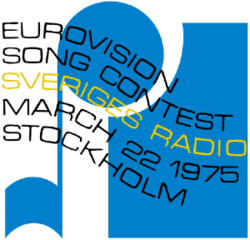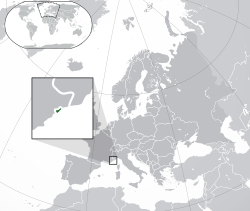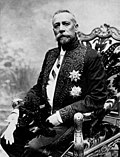Portal:Monaco
The Monaco Portal
Welcome! — Bienvenue! — Benvegnüu!

Monaco, officially the Principality of Monaco, is a sovereign city-state and microstate on the French Riviera a few kilometres west of the Italian region of Liguria, in Western Europe, on the Mediterranean Sea. It is a semi-enclave bordered by France to the north, east and west. The principality is home to nearly 39,000 residents as of the 2020s, of whom about 9,883 are Monégasque nationals. It is recognised as one of the wealthiest and most expensive places in the world. The official language of Monaco is French. Monégasque, English and Italian are also spoken and understood by many residents.
With an area of 2.08 km2 (0.80 sq mi), Monaco is the second-smallest sovereign state in the world, after Vatican City. Its population of 38,423 in 2024 makes it the most densely populated sovereign state. Monaco has the world's shortest national coastline (not counting landlocked nations): 3.83 km (2.38 mi). The principality is about 15 km (9.3 mi) from the border with Italy and consists of nine administrative wards, the largest of which is Monte Carlo.
The principality is governed under a form of semi-constitutional monarchy, with Prince Albert II as head of state, who holds substantial political powers. The prime minister, who is the head of government, can be either a Monégasque or French citizen; the monarch consults with the Government of France before an appointment. Key members of the judiciary are detached French magistrates. The House of Grimaldi has ruled Monaco, with brief interruptions, since 1297. The state's sovereignty was officially recognised by the Franco-Monégasque Treaty of 1861, with Monaco becoming a full United Nations voting member in 1993. Despite Monaco's independence and separate foreign policy, its defence is the responsibility of France, besides maintenance of two small military units. (Full article...)
Selected location article
The Grimaldi Forum Monaco, inaugurated in 2000 and named after the historical reigning family of Monaco, the House of Grimaldi, is an international event venue located in the Larvotto ward of Monaco. It hosts approximately 120 events and sees 250,000 visitors annually. (Full article...)
Selected pictures
Selected ward
Monte Carlo (/ˌmɒnti ˈkɑːrloʊ/ MON-tee KAR-loh; Italian: [ˈmonte ˈkarlo]; French: Monte-Carlo [mɔ̃te kaʁlo] or colloquially Monte-Carl [mɔ̃te kaʁl]; Monégasque: Munte Carlu, Ligurian: [ˈmuŋte ˈkaɾlu]; lit. 'Mount Charles') is an official administrative area of Monaco, specifically the ward of Monte Carlo/Spélugues, where the Monte Carlo Casino is located. Informally, the name also refers to a larger district, the Monte Carlo Quarter (corresponding to the former municipality of Monte Carlo), which besides Monte Carlo/Spélugues also includes the wards of La Rousse/Saint Roman, Larvotto/Bas Moulins and Saint Michel. The permanent population of the ward of Monte Carlo is about 3,500, while that of the quarter is about 15,000. Monaco has four traditional quarters, from west to east they are: Fontvieille (the newest), Monaco-Ville (the oldest), La Condamine, and Monte Carlo.
Monte Carlo is situated on a prominent escarpment at the base of the Maritime Alps along the French Riviera. Near the quarter's western end is the "world-famous Place du Casino, the gambling center ... that has made Monte Carlo an international byword for the extravagant display and reckless dispersal of wealth". It is also the location of the Hôtel de Paris, Café de Paris and Salle Garnier (the casino theatre which is the home of the Opéra de Monte-Carlo). The quarter's eastern part includes the community of Larvotto with Monaco's only public beach, as well as its new convention center (the Grimaldi Forum), and the Monte-Carlo Bay Hotel & Resort. At the quarter's eastern border, one crosses into the French town of Beausoleil (sometimes referred to as Monte-Carlo-Supérieur), and 8 kilometres (5 mi) to its east is the western border of Italy. (Full article...)
Selected environment article

The Rock of Monaco (French: Rocher de Monaco; Monégasque: Roca de Mùnegu) is a 62-metre (203 ft) tall monolith on the Mediterranean coast of the Principality of Monaco. It overlooks the Mediterranean Sea and the Port Hercules. (Full article...)
List of articles
|
|---|
Selected arts article

The Eurovision Song Contest 1975 was the 20th edition of the Eurovision Song Contest, held on 22 March 1975 in the Sankt Eriks-Mässan in Stockholm, Sweden and presented by Karin Falck. Organised by the European Broadcasting Union (EBU) and host broadcaster Sveriges Radio (SR), the contest was held in Sweden following the country's victory at the 1974 contest with the song "Waterloo" by ABBA. Nineteen countries were represented at the contest – a new record number of participants. Turkey made its first entry in the contest, and France and Malta returned after a one- and two-year absence, respectively. Greece, after participating for the first time in the previous year's event, opted not to participate in 1975, due to the Turkish invasion of Cyprus in 1974.
The winner was the Netherlands with the song "Ding-a-dong", composed by Dick Bakker, written by Will Luikinga and Eddy Ouwens, and performed by the group Teach-In. This was the Netherlands' fourth contest victory, matching the record number of contest wins previously set by France and Luxembourg. Having been the opening song of the contest, it was also the first time that a country had won from first position in the running order. The United Kingdom, Italy, France and Luxembourg rounded out the top five positions, with the UK achieving a record-extending ninth second-place finish. A new voting system was introduced at this contest; each country gave 12 points to its favourite, 10 points to its second favourite, and then 8 points to 1 point to other countries in descending order of preference. This numerical order of awarded points has since been used in every subsequent edition of the contest. (Full article...)
Selected religion article

The history of the Jews in Monaco goes back at least a century, most notably to the time of the Holocaust. Monaco had a very small Jewish presence before World War II, numbering approximately 300 people. During the war, the principality's government issued false identity papers to its Jewish residents to protect them from Nazi deportation. Prince Louis II refused to dismiss Jewish civil servants and protected Édouard de Rothschild from deportation. However, Monaco's police arrested and turned over 42 Central European Jewish refugees to the Nazis. Sixty Jews were arrested 27–28 August 1942, and ninety in total, according to The Algemeiner.
In 1948, the Association Cultuelle Israelite de Monaco was founded as the official organization of Monaco's Jewish community, and it provides the community with a synagogue, Hebrew school and no kosher food store, but a kosher section in some supermarkets. Today's Jewish community in Monaco consists primarily of retirees from France and the United Kingdom, and there is also a small population of North African and Turkish Jews. More Sephardic Jews came when they were expelled from countries like Morocco, Algeria, Tunisia, Yemen, and South America/ Spain. To them, Monaco and France were alternatives to Israel. (Full article...)
Selected sports article
Monaco participated at the 1992 Summer Olympics in Barcelona, Spain held between 25 July and 9 August 1992. The country's participation in the Games marked its fourteenth appearance at the Summer Olympics since its debut in the 1920 Games.
The Monaco team consisted of two athletes who competed across two sports. Christophe Verdino served as the country's flag-bearer during the opening ceremony. Monaco did not win any medal in the Games, and has not won a Summer Olympics medal as of these Games. (Full article...)
Selected education article
The American College of Monaco was an American tertiary education institution located in Monte Carlo, Monaco. It operated from 1968 until it went bankrupt in 1970. The college offered a four-year degree program and classes were held in hotels. Prince Rainier III was the college's chancellor, and it was established by the Principality at the request of Princess Grace. (Full article...)
Selected transportation article

The Principality of Monaco has currently a single railway station, Monaco - Monte Carlo, part of the Marseille–Ventimiglia railway line. The station was originally opened in 1867, but extensively rebuilt in 1999. The length of railway within the Principality is 1.7 km (1.1 mi), giving Monaco the third-smallest railway system in the world. (Full article...)
Selected biography
Daniel Elena (born 26 October 1972) also known as "Danos" is a Monégasque rally co-driver working most notably with Sébastien Loeb. Between them the pair have won the World Rally Championship (WRC) nine times with Citroën, later competing with Hyundai. Their 79 wins together make him the co-driver with the most victories in the history of the WRC. (Full article...)
Related portals
Need help?
Do you have a question about Monaco that you can't find the answer to?
Consider asking it at the Wikipedia reference desk.
Categories
Get involved
For editor resources and to collaborate with other editors on improving Wikipedia's Monaco-related articles, see WikiProject Monaco.
Topics
Associated Wikimedia
The following Wikimedia Foundation sister projects provide more on this subject:
-
Commons
Free media repository -
Wikibooks
Free textbooks and manuals -
Wikidata
Free knowledge base -
Wikinews
Free-content news -
Wikiquote
Collection of quotations -
Wikisource
Free-content library -
Wikiversity
Free learning tools -
Wikivoyage
Free travel guide -
Wiktionary
Dictionary and thesaurus



































































